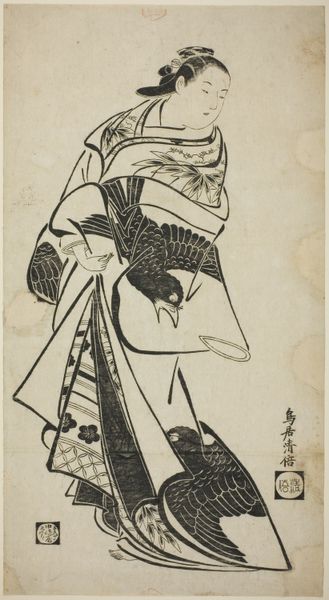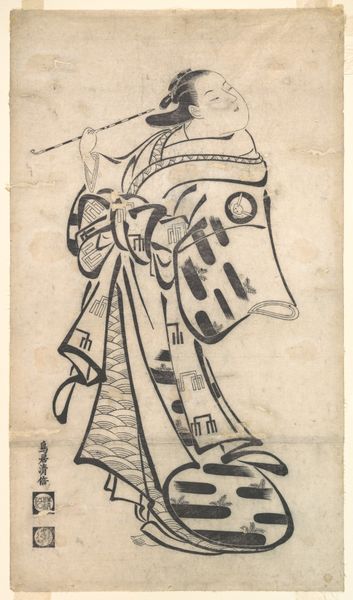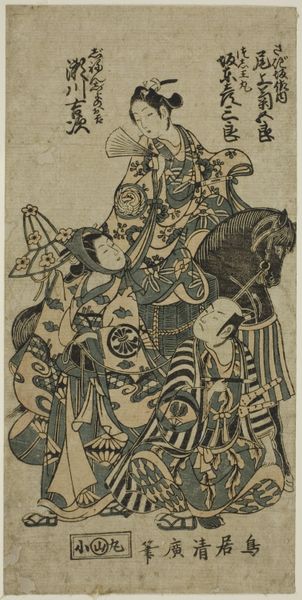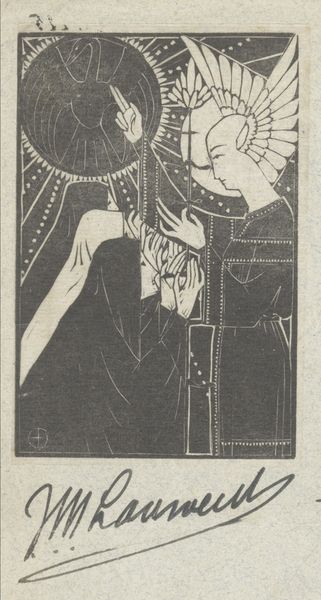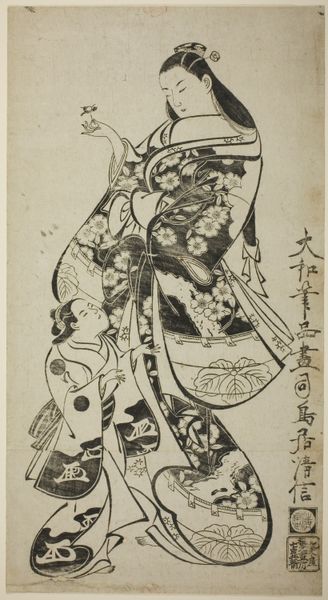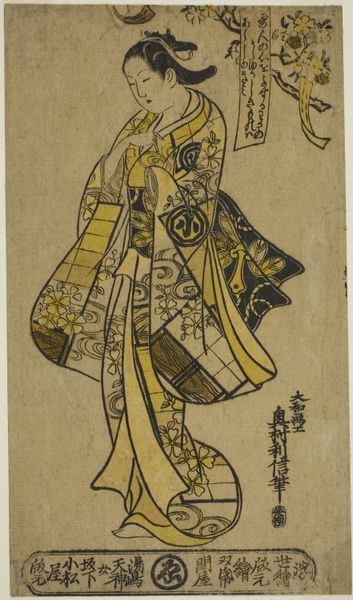
print, woodcut
# print
#
asian-art
#
ukiyo-e
#
japan
#
figuration
#
woodcut
Dimensions: 71.5 × 12.1 cm (28 1/8 × 4 3/4 in.)
Copyright: Public Domain
Curator: Before us hangs "Shoki, the Demon-Queller," a Japanese woodblock print from around 1770, created by Utagawa Toyoharu. It’s currently held here at The Art Institute of Chicago. Editor: Well, he certainly looks fierce. I'm immediately struck by the stark contrast—the boldness of the black ink against the ground creates an imposing figure, full of energy. It’s an assertive image, the artist leaves no space. Curator: Exactly. The image draws from a rich well of cultural significance, portraying Shoki, a figure from Chinese folklore adopted into Japanese culture as a powerful vanquisher of demons and bringer of good fortune. This work exemplifies ukiyo-e prints, popular during the Edo period in Japan. Editor: Ukiyo-e, "pictures of the floating world," right? The dynamic pose, almost bursting out of the frame, is incredibly striking, given the limitations of the woodblock technique. Notice how lines are used to suggest movement in his hair, and how that counterbalances his imposing posture? Curator: Precisely. Woodblock printing was, of course, a painstaking process, requiring collaboration between artist, block carver, and printer, but the format enabled the dissemination of such images within urban centers to appeal to middle-class and merchant classes. The patronage for works like this allowed for exploration of new subject matter. Editor: The craftsmanship is remarkable—even the smallest details contribute to the overall sense of power and tension. The heavy boots feel grounded and solid, counterpointing the sweeping lines of the cloak above. There’s something almost theatrical in how his scowl and gaze focus all of our attention. Curator: Yes! Such prints played a significant role in shaping popular perceptions of figures like Shoki. The bold presentation that you notice reinforces his legendary status and role as protector of the public at a time when people increasingly looked to cultural imagery to make sense of the socio-economic challenges around them. Editor: I've learned so much just by really looking at how all of those lines and textures come together. Who knew cultural significance could come in such graphic, dramatic packages! Curator: Indeed. The confluence of skill, history, and cultural purpose is clearly present. One leaves with an enduring impression of a formidable figure poised to guard all against malevolent spirits.
Comments
No comments
Be the first to comment and join the conversation on the ultimate creative platform.




